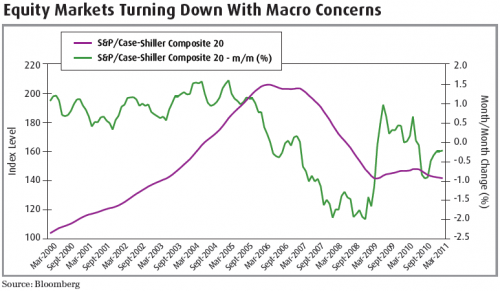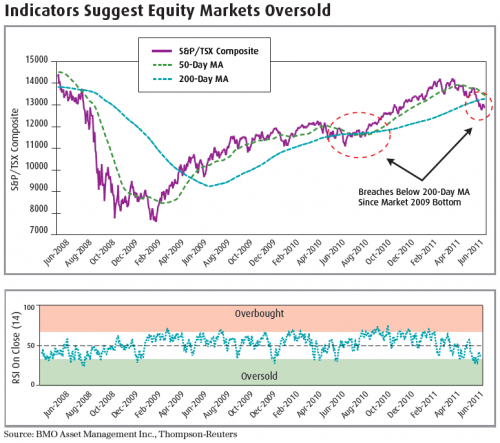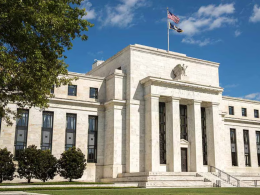Weakness May Present Buying Opportunities
Monthly Strategy Report June 2011
by Alfred Lee, CFA, DMS, Vice President & Investment Strategist
BMO ETFs & Global Structured Investments
BMO Asset Management Inc.
alfred.lee[at]bmo.com
“Sell in May and go away,” so goes the old adage in the investment world. Does the saying however have any validity or does it exist simply because it rhymes? Undoubtedly, those investors that followed the saying this year would have come out ahead with the major equity markets around the globe experiencing a sizable sell-off over the last several weeks. A number of recent macro-economic events are causing investor sentiment to take a turn for the worse, at least for the short-term. For example, the S&P/Case-Shiller 20 City Index1 fell back below its crisis low, U.S. jobless data is waning and the end of the second instalment of quantitative easing2 (QE2) is upon us. On the homefront, the implications of a weakening U.S. economy have investors concerned, as it may have supply chain impacts on the U.S. and Canadian trade. In addition, the CME Group Inc.’s recent margin requirement hikes to cool pricing of a number of commodities have also led to the softening of the Canadian equity market. With these concerns in the market, in addition to weaker expected growth out of China and Japan, the second and third largest economies in the world respectively, many of the global equity indices have fallen below or have traded near its 200-day moving average (MA), a key technical support level. Over the last several weeks, we have received a number of emails inquiring whether this technical event would have long-sustaining bearish implications on the market. We view the market as being characterized by three main time horizons. The first, and longest, is the secular cycle, which can last several business cycles and is caused by large global demographic shifts. The next timeframe is the cyclical cycle, which is largely defined by the business cycle itself. The last, and shortest, of the cycles is the trading cycle which is largely driven by investor sentiment and trade order imbalances. In our view, the current equity market weakness, remains contained in the trading cycle, with shorterterm traders selling and longer-term investors looking for buying opportunities. As such, we believe the current weakness to be a bull-market correction, provided equity markets don’t plummet aggressively below the 200-Day MA, an event which would cause the sentiment of longer-term investors, who are currently buyers, to also turn bearish and thus trigger additional selling.
As we mentioned in our Trade Opportunity Report, “June Weakness”, we don’t subscribe to the notion that “selling in May and going away” is a winning strategy that can be implemented effectively year after year. However, we do acknowledge that equity markets exhibit some seasonality, with June being one of the weakest months in terms of historical average performance. Additionally, the summer tends to have lower volume levels than other months. Therefore, we do to a degree believe there is some truth to the notion that investors have a tendency to pare down risk assets in favour of more defensive assets before summer.















